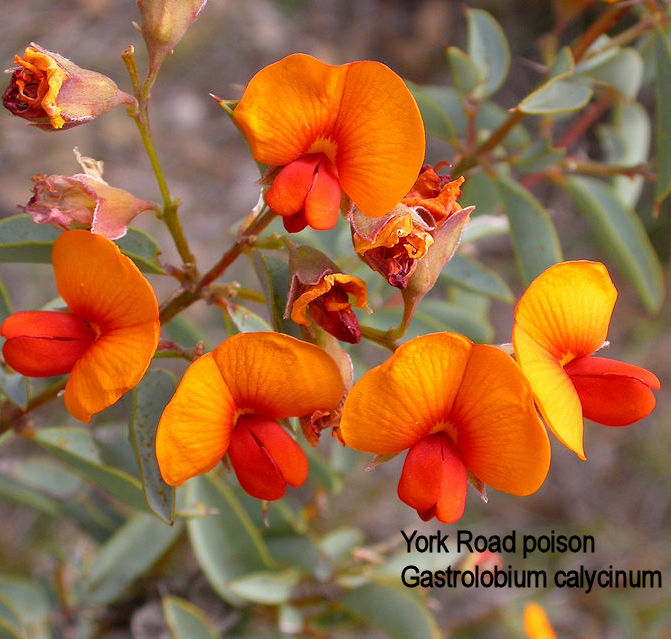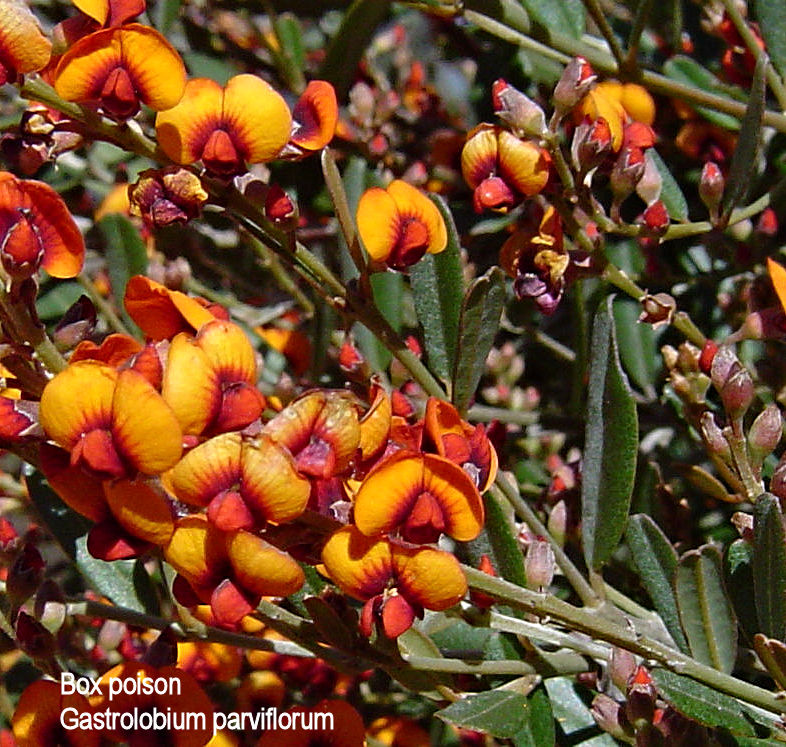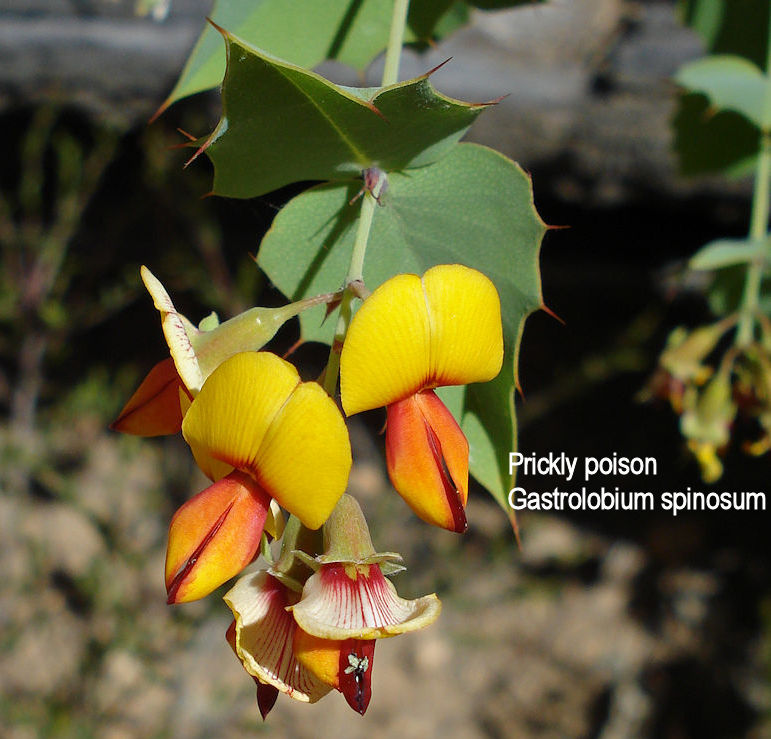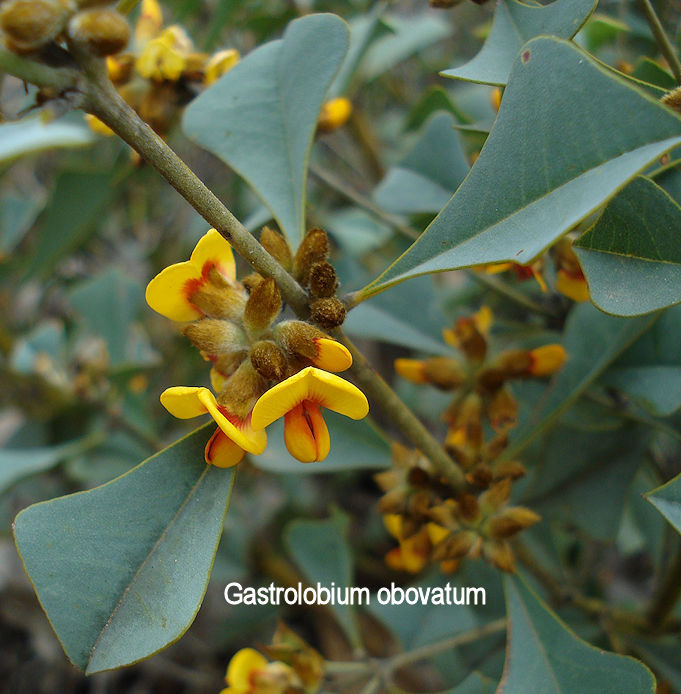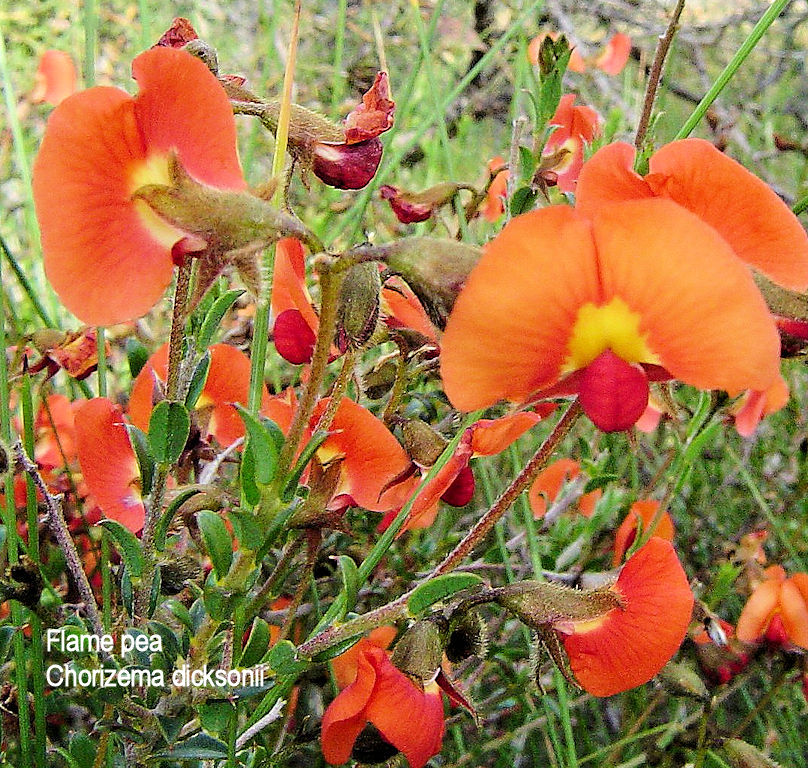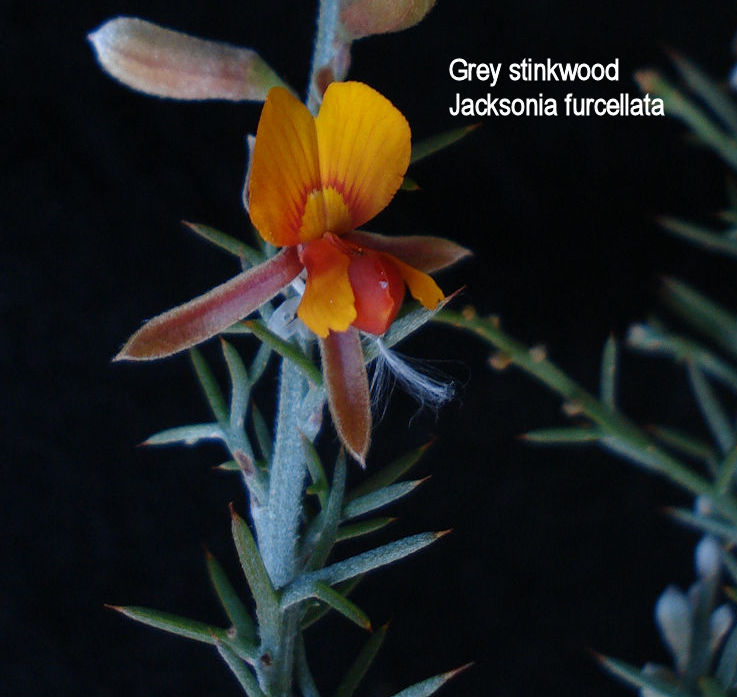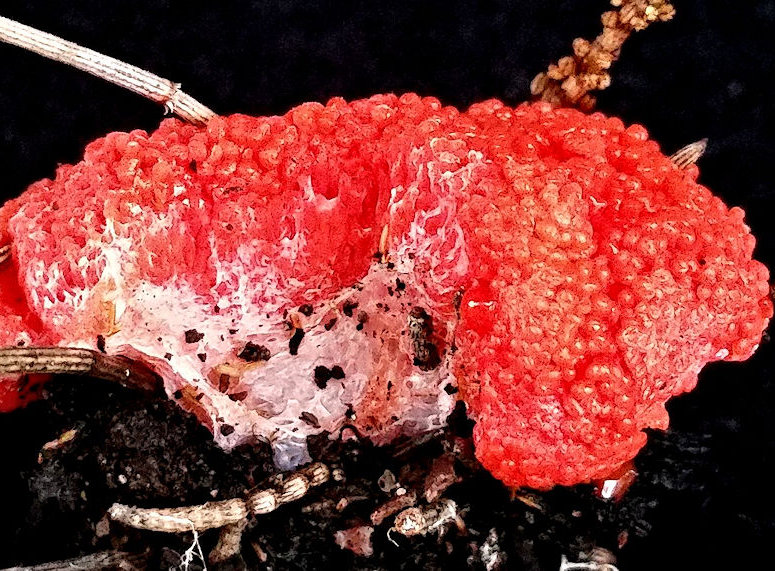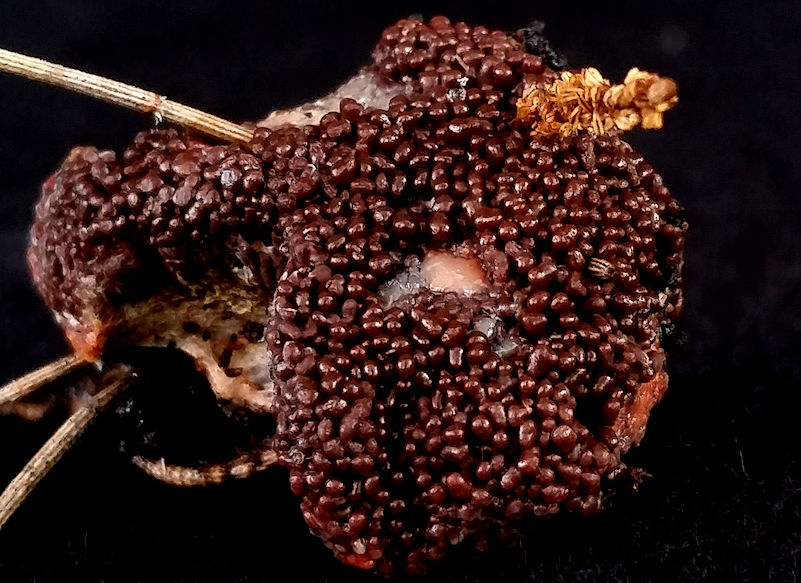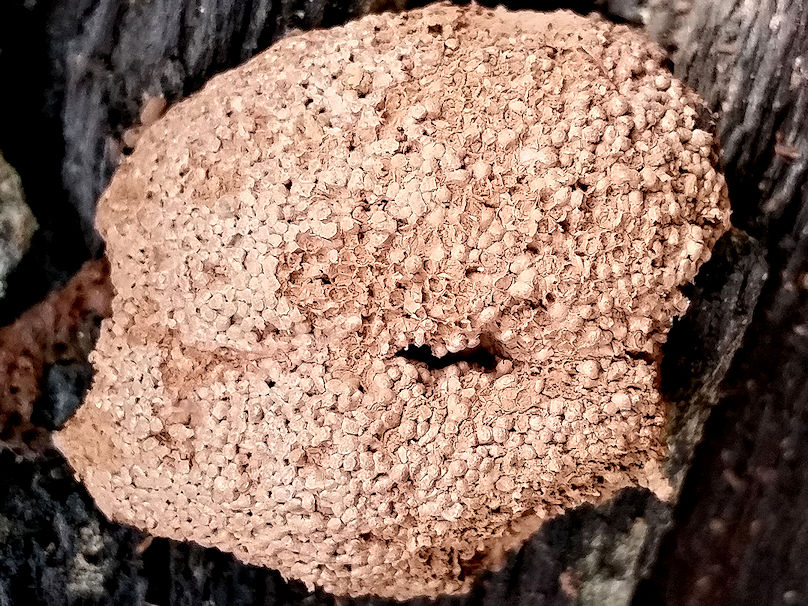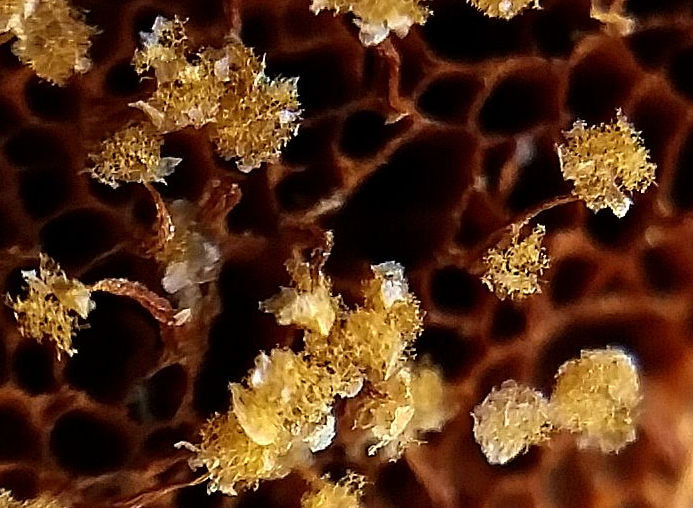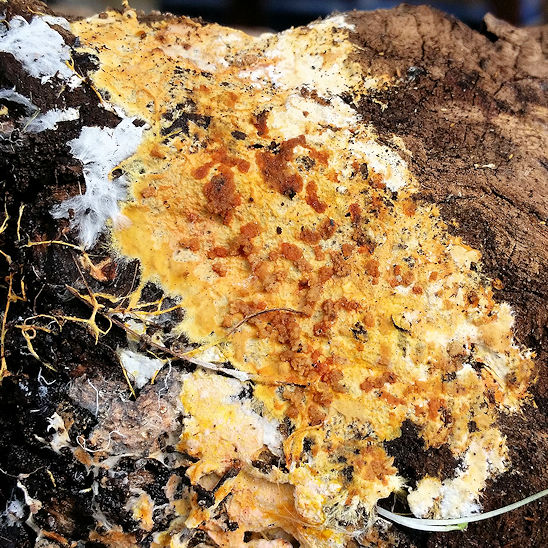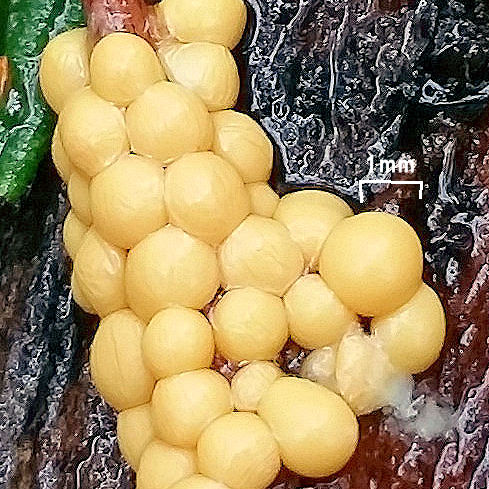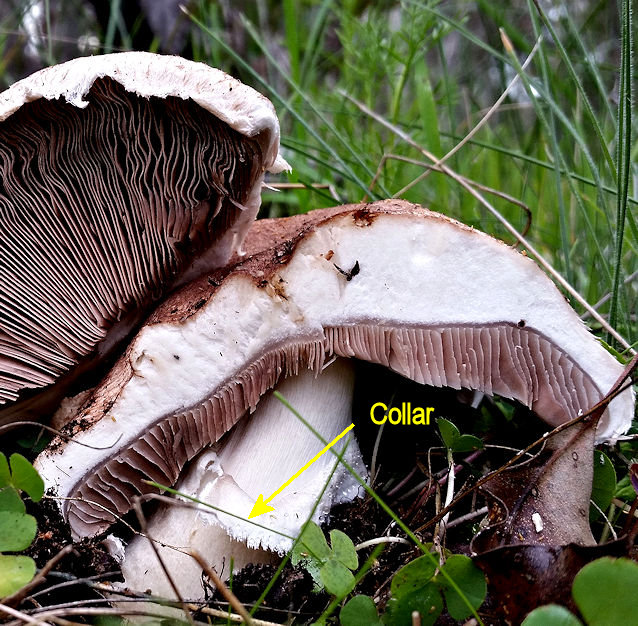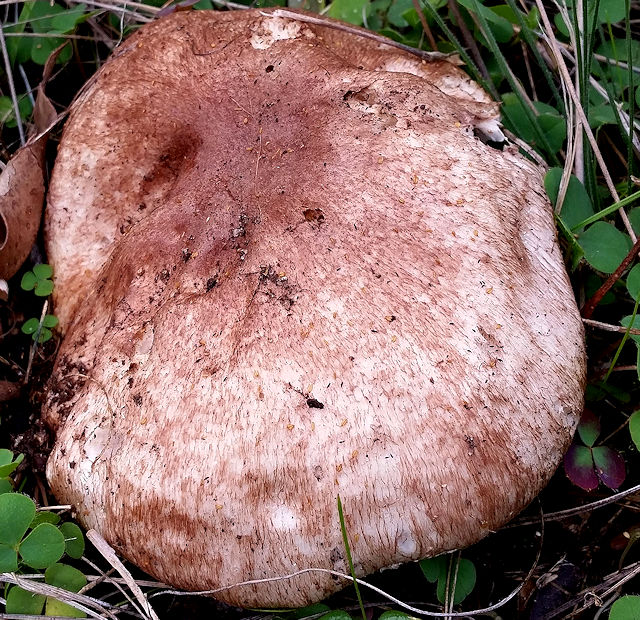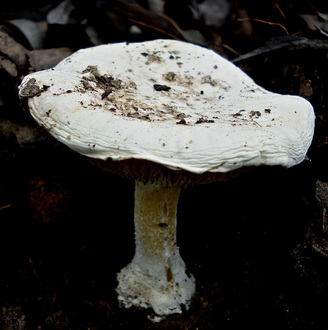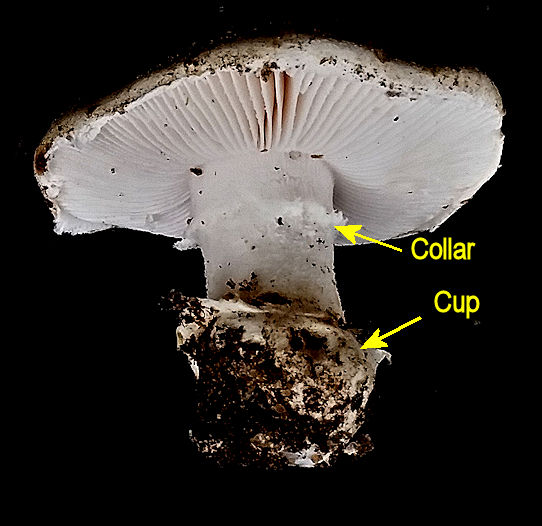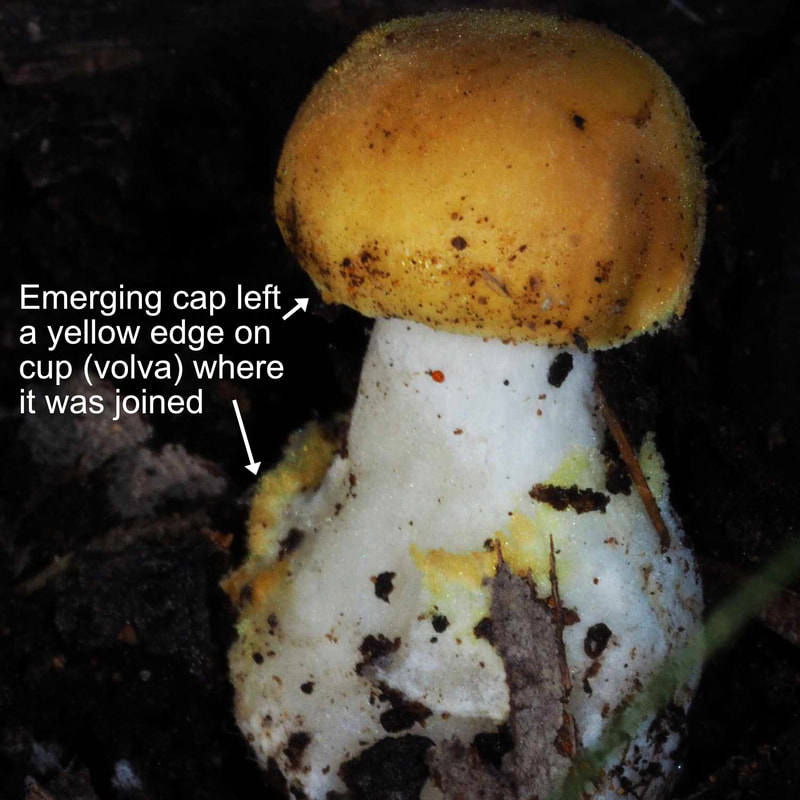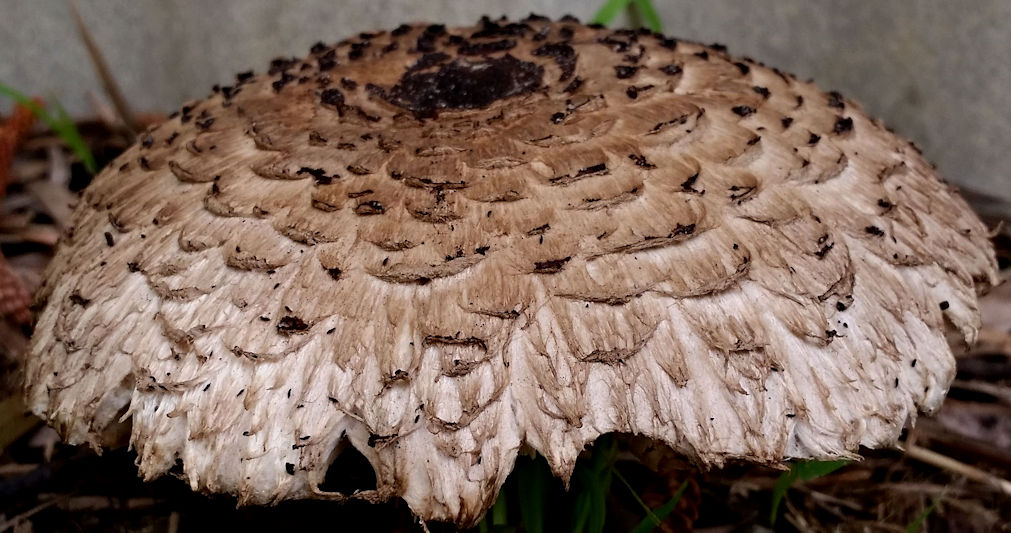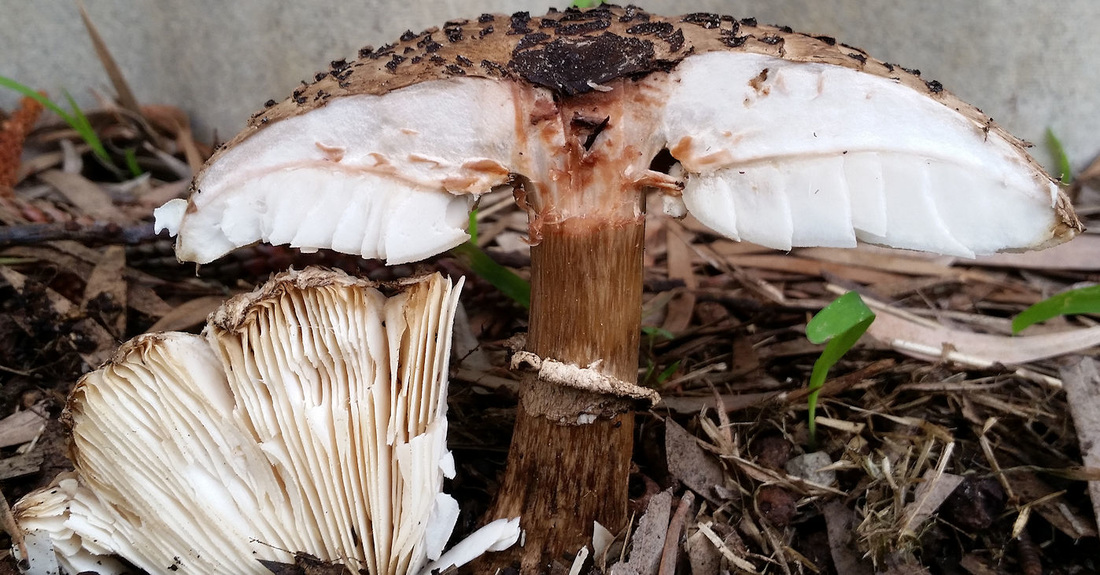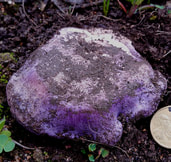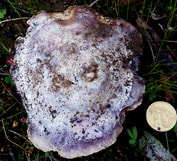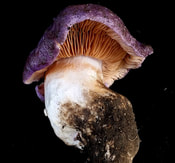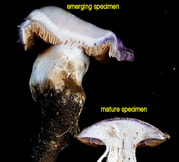In 1835 Governor James Stirling and Surveyor General James Septimus Roe were part of the Great Southern expedition from Perth to Albany via York. Near Crossman seven of their bullocks died from eating Gastrolobium poison pea plants. These were amongst the first of many thousands of sheep, cattle, and horses lost by settlers and later farmers.
However on the positive side, poison plants were so thick on lighter soils that farmers avoided them and they were fenced out, or they were an additional reason for the many reserves and remnant vegetation in the Great Southern, compared with the wheatbelt.
The toxin is Fluor acetate, the active part of 1080 poison that is used for controlling feral rabbits, cats and foxes. Poison plants are safe to touch, but do not eat or suck them, particularly the flowers and seeds. Native animals have developed resistance and bronze wing pigeon thrives on the seeds.

- Leaves are joined to the branch together in groups of 2 to 5 emerging roughly opposite each other, at regular intervals along the stem. No alternate leaves.
- Where the leaf joins the stem (leaf axil), there is a short spine (stipules) on either side of the join.
- Flowers arise from a group (an inflorescence) at the ends of branches, not the leaf axil.
These are shown on sandplain poison Gastrolobium bilobum, (the most common poison at Dryandra) on the left.
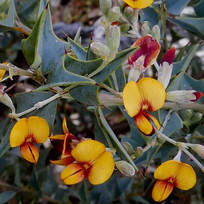
It does not occur in Foxes Lair.
The following pea plants are not poisons.
